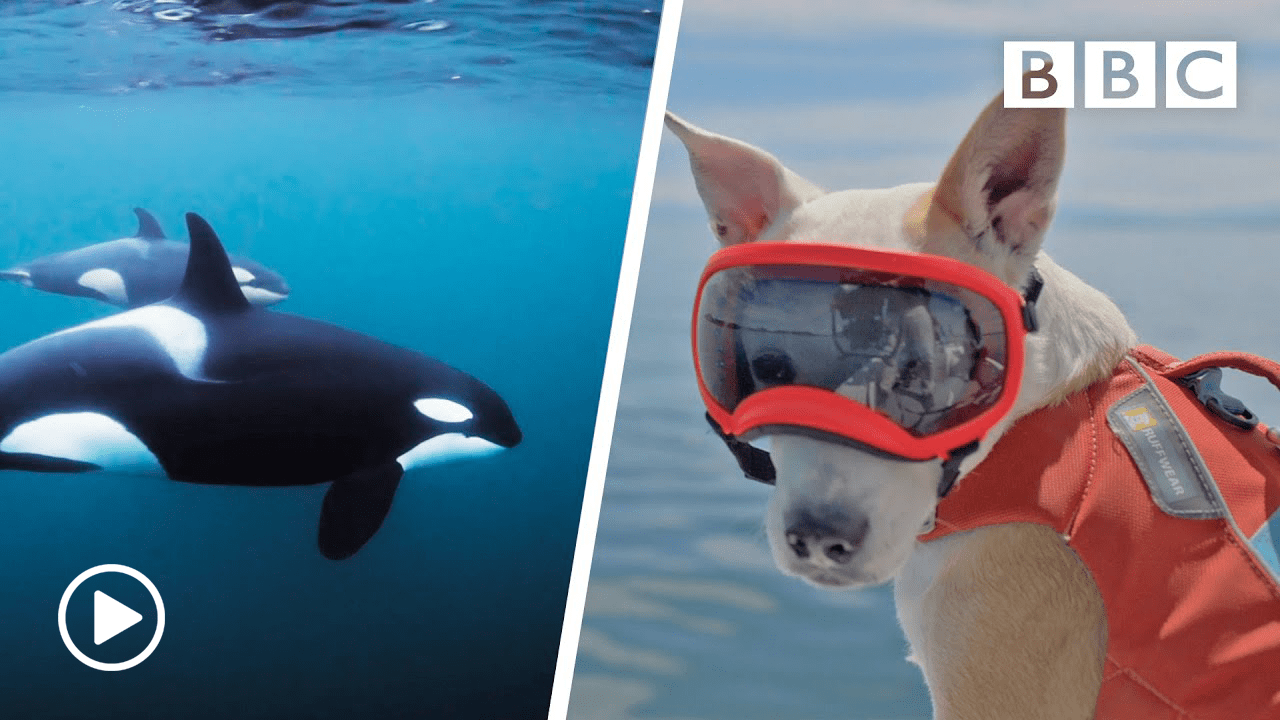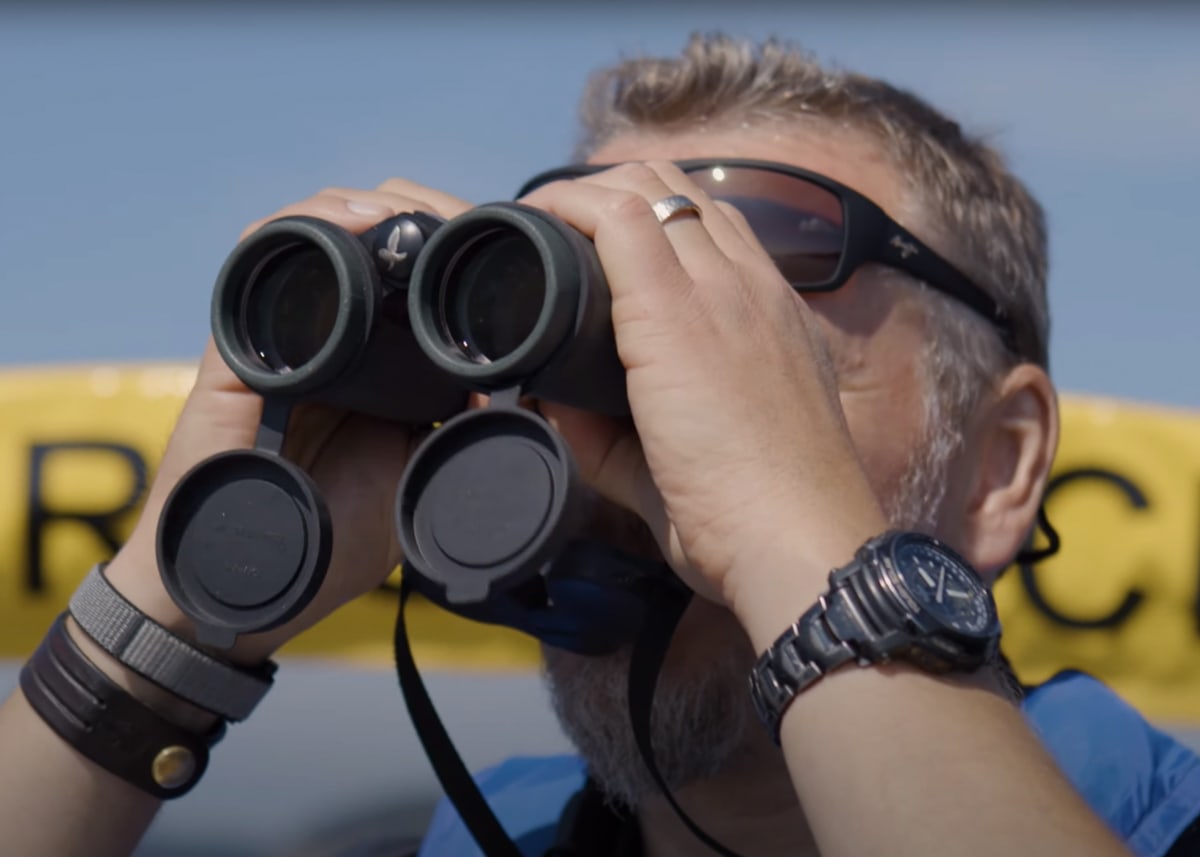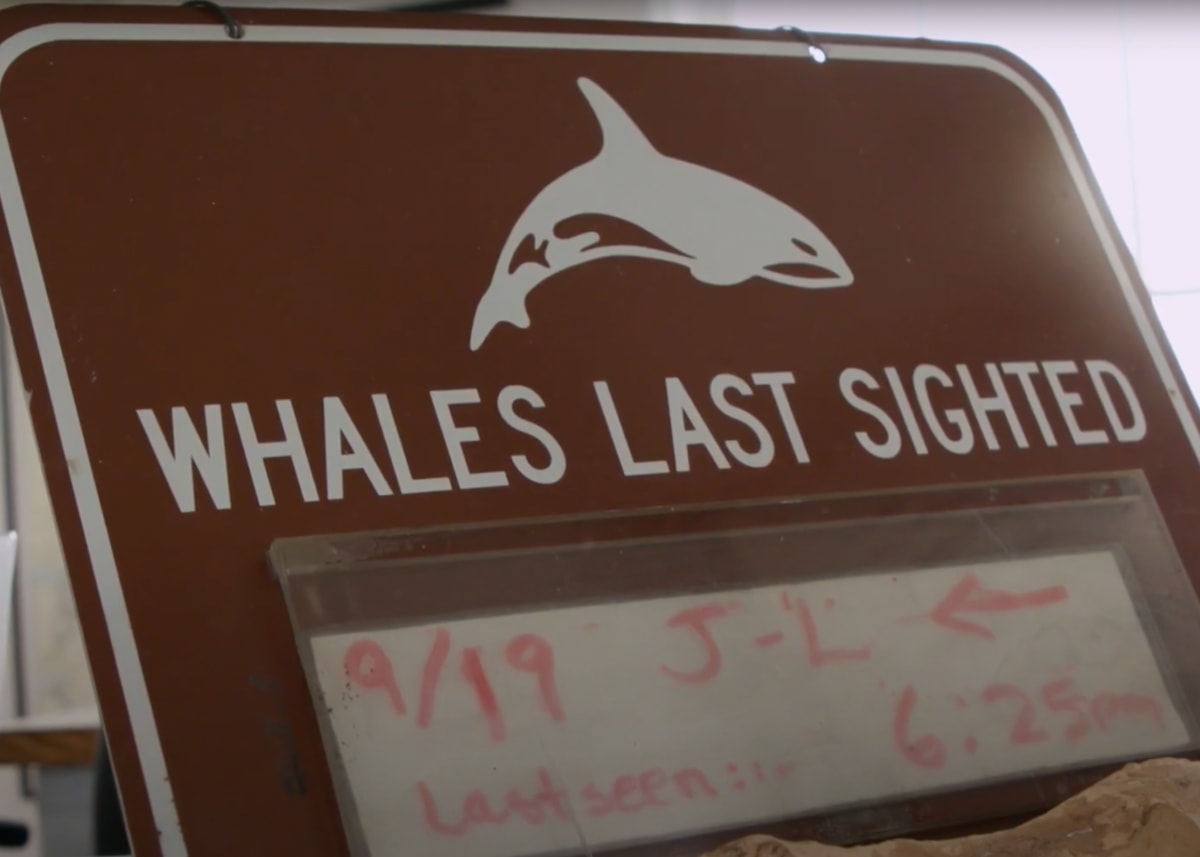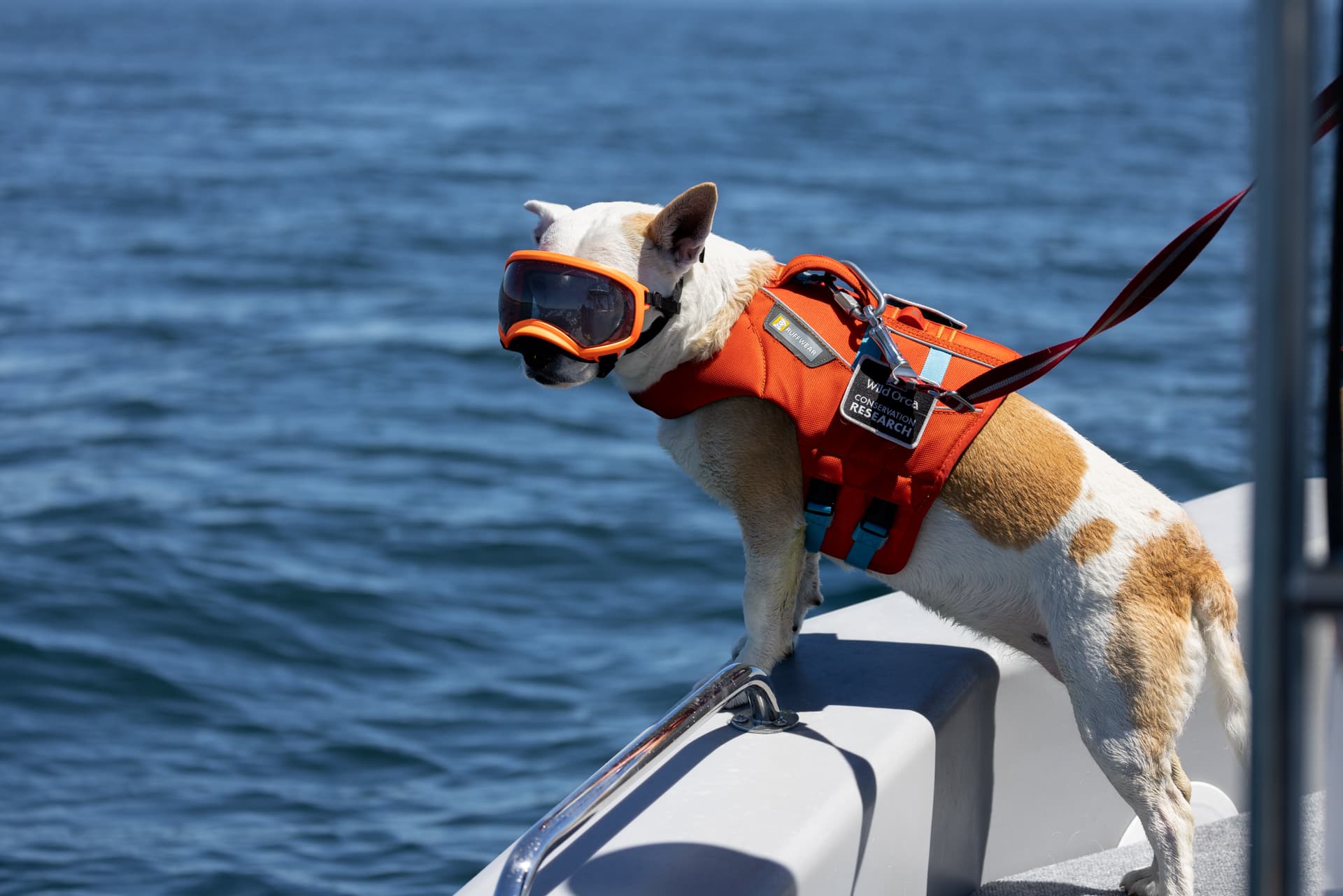
We’re all familiar with dogs with jobs—from emergency service K9s, to dogs trained to find drugs or the fruit in your hand luggage. Employees with a superpower, though not hidden, it’s as plain as the nose on your face.
Our nose and brain work together to detect odors that help us find food, or avoid harm. Memories stored via this olfactory system form strong connections, that’s why the scent of something not experienced since childhood can take you right back. Yet a dog’s olfactory system is 1,000-10,000 times more sensitive than ours, and it’s this amazing capacity that’s been harnessed in these working dogs.
It’s said that a great white shark could detect one drop of blood in an Olympic-sized swimming pool, yet a scent detection dog can find a specific odor in air, even when it’s diluted to just a few parts per trillion. That’s not an easy number to get your head around, but when a specially-trained scent dog like Wild Orca’s Eba is at work, that means it’s possible to detect killer whale poop up to one nautical mile away.
Learn About It
How Your Dog's Nose Knows So Much
Eba, and her fellow dog detectives, are trained to filter out all of the other scents invading their senses. A special chamber behind a dog’s nose collects all available data, allowing the brain to process, and then discard scents unrelated to the job—just as we drown out noise around us as we focus at work in our office.
Once on the scent, the dog must now direct the handler—and in Eba’s case the boat—to their target. This requires understanding her visual cues—from “sniffing up the air,” to body posture and stance—and then signaling this intel to the skipper to indicate direction, but also speed. As Eba comes closer to her target, her handler can detect reactions that indicate when the scent is stronger.
An additional challenge for an ocean-going scent detection dog is that time is of the essence, and so team work ensures they can arrive in time to scoop the poop before it sinks, taking invaluable health information with it, such as a new pregnancy.
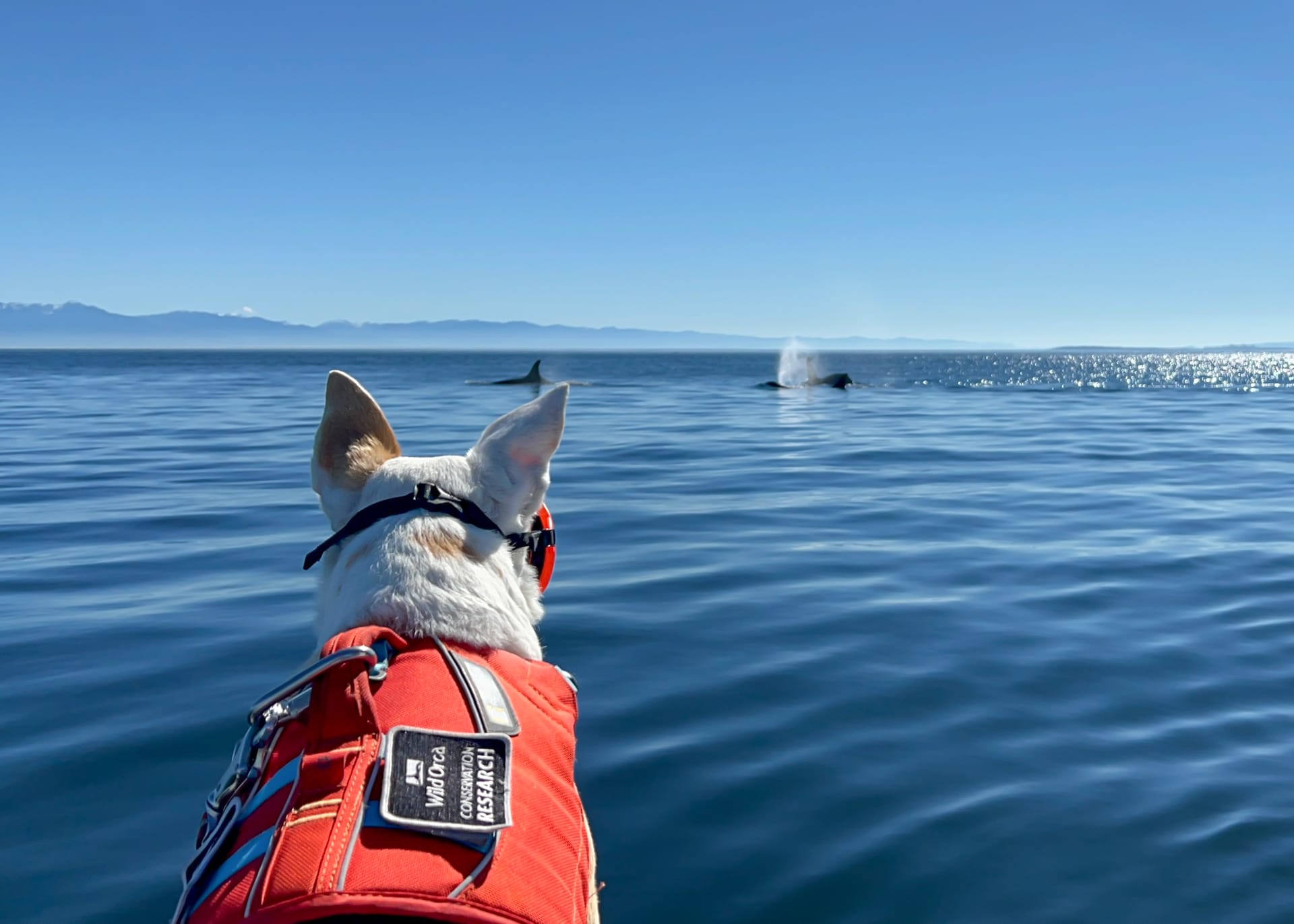
Eba searches for a fecal scent behind a group of Southern Resident killer whales aboard R/V Cheena.
With Eba’s expertise, our research avoids disturbing foraging whales, by remaining at a distance to collect valuable material—usually classified as waste. Just as trash gives insights into the lifestyle of a homeowner, killer whales’ waste offers a window into an individual and their diet, reproductive health, stress levels, and the effects of exposure to environmental noise and pollutants.
Historically, taking blood and blubber samples was necessary to understand the health of a species at risk like the Southern Resident killer whales. Now, thanks to Eba, we can do this non-invasively, without harm to the animals we’re trying to save.



